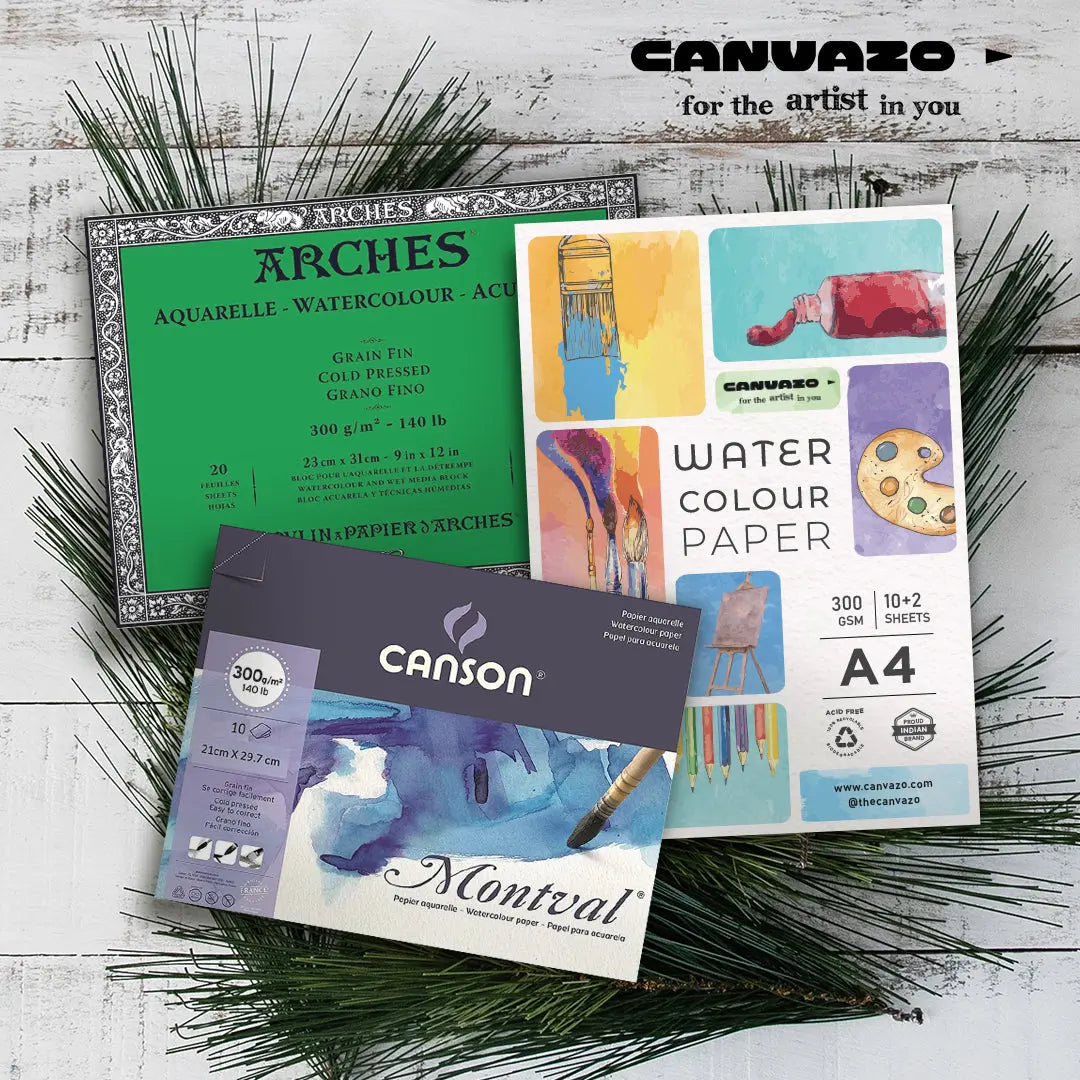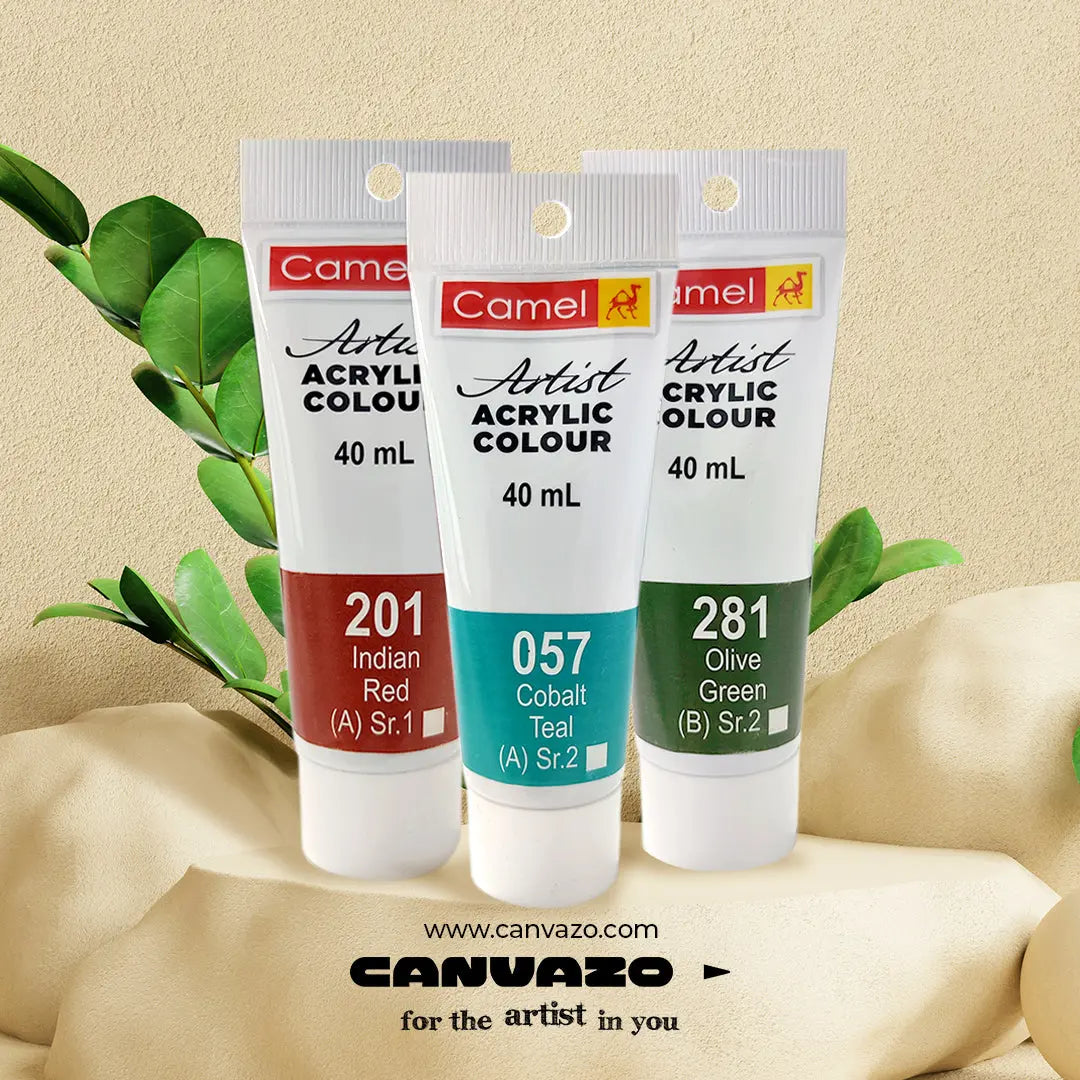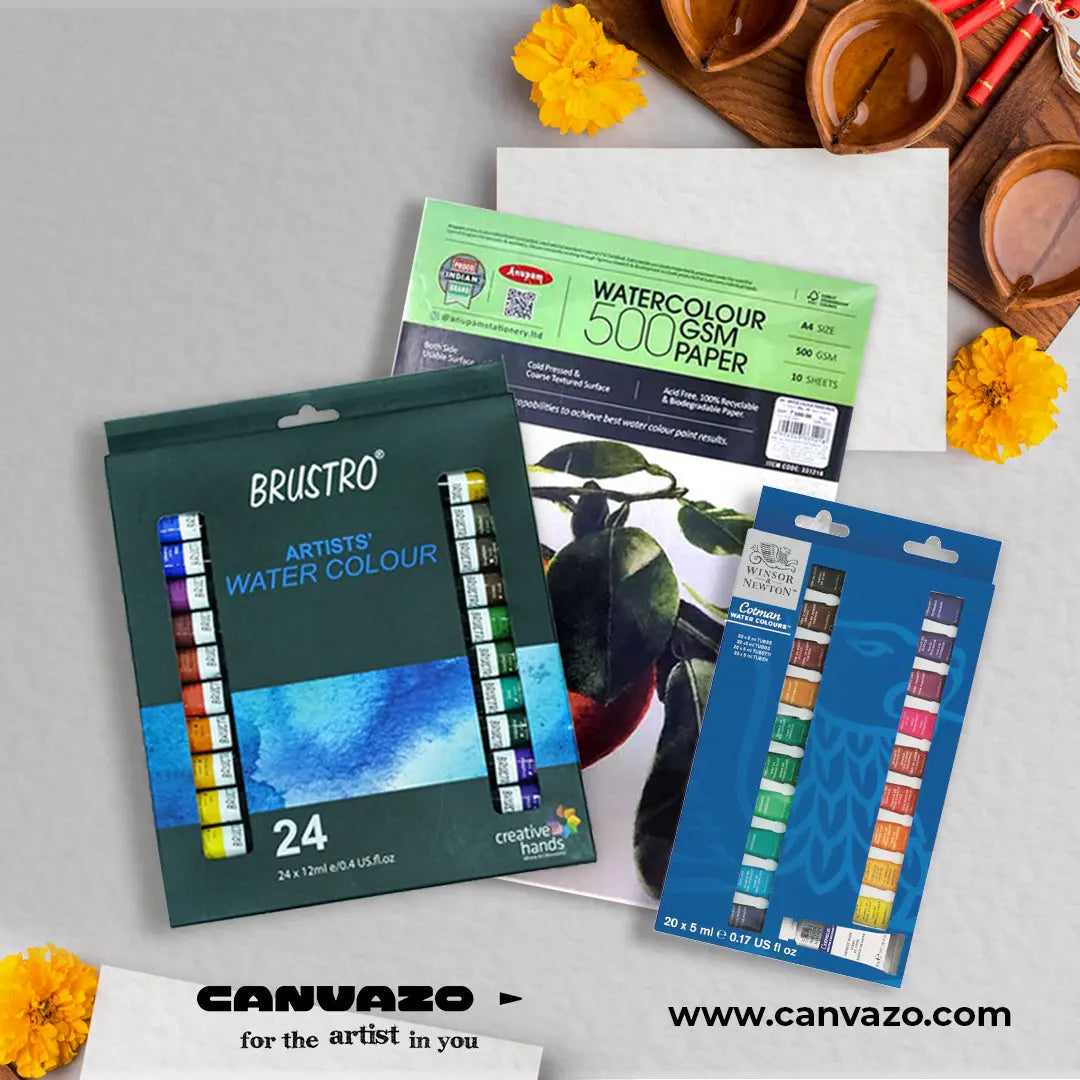When it comes to watercolour painting, the quality of your paper is of the utmost significance. Choosing the proper surface for your artwork may drastically improve its appeal. But with so many papers available, how can you select the perfect one?
Watercolour Finishes
As a watercolour artist, the paper you use must have certain features that will improve your artwork. Your paper must resist repeated washes, be non-yellowing, be of adequate weight, and have constant texture. When confronted with such a vast selection of papers, it might be challenging, particularly for novices, to choose just one. Here we have prepared a resource for artists who want to learn more about watercolour sheets to select the optimal surface.
Surface Forms
Types of Watercolour Paper Surfaces
Choosing a surface type may be one of the first options you find when picking watercolour paper. Hot-pressed watercolour paper is the smoothest and ideal for painters who want to represent their themes accurately. This paper is popular among artists and designers because of its reproduction-friendly flat finish. Cold Pressed paper has a surface with a medium texture, preferred by novices because it is suitable for many methods and applications. As its name suggests, rough is the most textured watercolour paper. If you wish to maximize the granulation of your watercolour paints, the deep holes in the paper are ideal. This strongly textured paper is suitable for watercolour painters with a free technique.
-
Paperweights, Ingredients, & Production Techniques
You will have an option about the weight of the paper you want to paint on. Paper is typically measured in pounds or grams per square meter (gsm). Lightweight papers are less expensive but must be stretched before use (you can find out more about paper stretching below). Heavyweight papers may withstand numerous washing items and should only be stretched if large quantities of water are used. Generally, any paper under 200 pounds/425 grams must be stretched.
You must also choose the material of the watercolour sheet from which you would want your paper to be manufactured. Typically, watercolour papers are fabricated from either cotton or wood pulp. 100% cotton papers are of professional grade and are regarded as the ideal surface for painting. Cotton provides unparalleled strength and assures that your creation will endure the test of time.
When perusing our selection, you may also note that some papers are classified as "mold created"; this refers to papers manufactured using a Cylinder Mould Machine. Mold-made papers are sought after by artists because of their greater weight, spectacular watermarks, and higher surface durability. Other papers may be machine-made, with a single sheet produced on a wire belt. These paper forms need a deckled edge and are more sturdy than mold-made ones. Additionally, the texture of machine-made paper will be more consistent.
-
Paper Formats
Most watercolour papers are available in various sizes and formats, so whether you want a portable pad for painting on the move or full imperial (30" x 22") paper for big-scale studio paintings, there will be an appropriate size and format for you.
-
Unbound Watercolour Sheets
Sheets of Loose watercolour paper are typically offered in Full Imperial sizes in bundles of 5 sheets. A standard Full Imperial sheet is 30 inches by 22 inches (76cm x 56cm). If you prefer smaller-sized paper, we can cut it into 12 and 14 imperials. Any paper packs cut to 12 imperials will include ten sheets and measure 15" x 22" (56cm x 38cm). Any paper packs cut to 14 imperials will consist of 20 sheets and measure 11" x 15" (38cm x 28cm). On our website, you may choose the size when you add a piece of paper to your shopping basket.
-
Pads of Bockingford Paint Paper
Watercolour Paper Pads are collections of individual sheets of watercolour paper bound together (often with a spiral or a gum strip). Watercolour paper pads are convenient for taking artwork outside to paint. Lubed and spiral-bound pads make it easy to remove individual pages, so you may easily take artwork from the pad to frame or store. It is possible to update several pages at once. Watercolour pads may be oriented in a landscape or portrait configuration and are bound on one side. A Bockingford gummed Hot Pressed pad and a Bockingford NOT pad with a spiral binding are seen above. The gummed strip may be found along one of the longest sides of the HP pad, and the NOT pad's spiral binding faces the shorter side of the pad.
-
Watercolour Block with a Carved Arch
Watercolour Paper Blocks are a terrific alternative if you need more time or money to extend your watercolour paper. When blocks are attached on all four sides, modest quantities of water are less likely to cause the paper to cockle. As these blocks are bonded on both sides, you must remove the top layer of paper to begin a new painting on the sheet beneath. Typically, there will be a tiny gap in the glue on one of the longest sides of the block; a knife may be inserted into this gap and used to remove the top sheet of paper.
-
How to Disassemble a Paper Block
In the first picture, you can see that each edge of the block has been bonded. The center image depicts the tiny opening in the adhesive; here is where a palette knife or blade would be inserted to remove the top layer of paper carefully. You can hardly see the spaces between each sheet. The final picture puts a blade into the gap to remove the top layer.
TIP:
When using a sharp blade, maintain it flat so as not to sever the sheet of paper you are removing or underneath it.
If you paint on a thin watercolour paper, it will likely need to be stretched before use. This may be unattractive in a completed painting, and you will find that paint settles in the troughs created by cockling.



